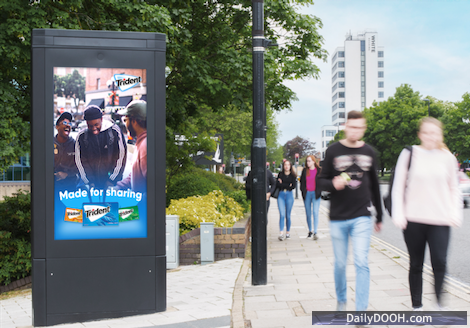Adrian J Cotterill, Editor-in-Chief
Leading out-of-home agency Kinetic Worldwide this week reveals the first findings of a new study that proves inclusive public messaging in advertising is financially beneficial for brands, uniting people and normalising diversity and inclusivity.

The Real-World Planning research in collaboration with Clear Channel, Global and JCDecaux, surveyed 2,613 people to test and compare traditional style ‘business as usual’ creative advertising with ones that are inclusive and representative in their approach. The study then tested the effect of the advertising when shown on OOH sites compared to online social channels (private media).
Jennie Roper, Head of Insight, Kinetic told us “Brands should get some attitude and not just plan on physical demographics. It’s how you feel on the inside as well as how you look on the outside, which mean brands need to understand and plan around how a person identifies emotionally as well. Kinetic’s Journeys platform can marry the perfect blend of attitude and demographics, fusing behavioural and attitudinal data sources to develop a detailed picture of audience activity for people of all ages, religions and ethnicities. Inclusive marketing isn’t just the right thing to do, it also drives purchasing intent and unlocks spending power of, currently, largely ignored audiences in advertising. OOH and its public nature is the perfect medium for brands to speak out and for society, it can play a key role in normalising inclusive attitudes in the real world.”
Kinetic tested two category groups, FMCG and automotive. Respondents were shown a ‘business as usual’ Trident chewing gum advertisement and a Buick car advertisement, both sourced out of market to ensure there was no familiarity with the brands. In partnership with Brand Advance, Kinetic’s design team developed inclusive creatives for both brands.
The research shows that an inclusive ad viewed in the public domain drove a 22% lift in purchase intent for 18-34s, whether the person experiencing the ad was personally represented in the creative execution or not.
For 18-34s, the inclusive message shown on social media drove a similar level of purchase intent to the “business as usual” creative, suggesting the public nature of brand messaging can have a powerful positive influence and drive key brand metrics.
When 18-34s viewed an inclusive message on an OOH site, around a third, strongly agreed the brand advertised was inclusive, authentic, of high quality, trustworthy, had longevity, was market-leading, and distinctive. When the same inclusive creative was presented via social media, only a quarter felt the brand advertised had the listed positive brand attributes.
The study also showed inclusive adverting had a powerful effect on purchase intent in city centres – around 40% or city-centre dwellers strongly supported inclusivity issues.
Almost half of 18-34s strongly support inclusive movements, including Pride and the LGBT+ community (45%), Black Lives Matter (46%) and the #MeToo movement (42%). Significantly lower proportions of 35–54-year-olds and over 55s were strongly supportive of these issues.
Younger audiences were also more likely to support each inclusive cause, even if they didn’t self-identify with them. If people come from a diverse background and are affected by one issue, then they have strong empathy for the whole inclusive movement.

Follow DailyDOOH